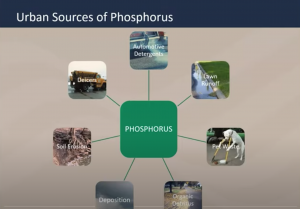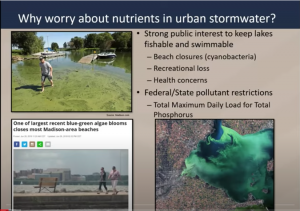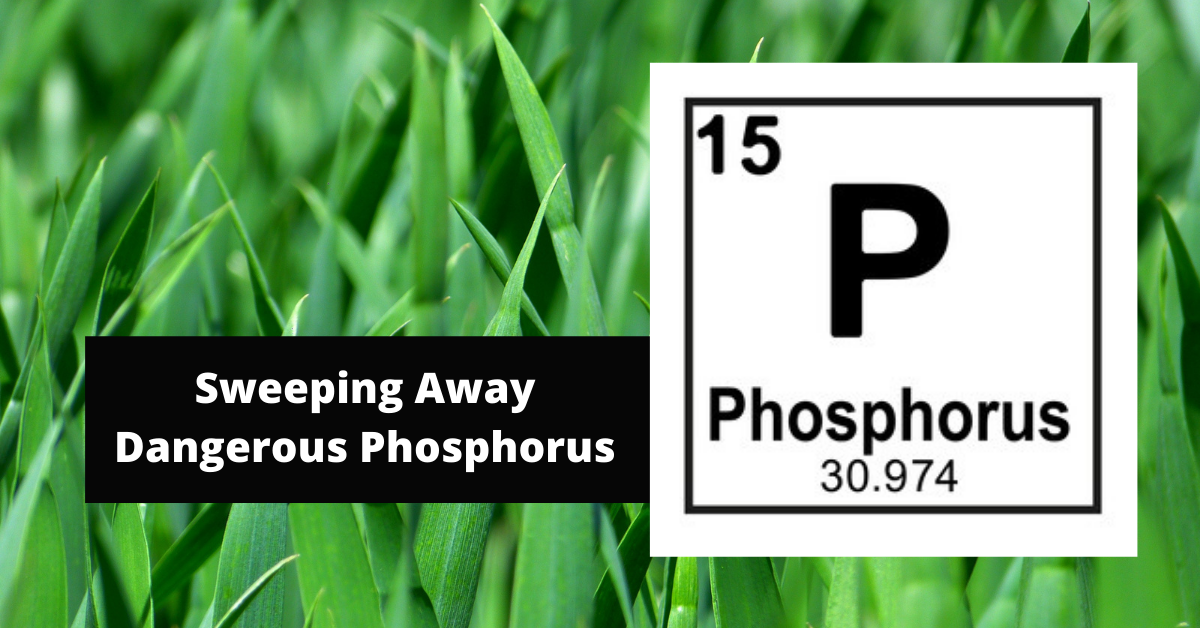Sweeping Away Dangerous Phosphorous
What is Phosphorus
You might remember learning about phosphorus back in chemistry class. Phosphorus is a chemical element, represented as P on the Periodic Table with an atomic number of 15. Phosphorus is similar to nitrogen in that it is important to life, crucially impacting the formation of DNA, cellular energy, and cell membranes in biological organisms.
How is Phosphorus Dangerous
You might be thinking, if phosphorus is so important to living organisms, why would we want to get rid of it? The problem arises when an area has too much phosphorus. This can be detrimental to the surrounding eco system and cause eutrophication and algae blooms, which can kill aquatic life. These are two things that need some explaining, let’s start with eutrophication.

Courtesy of Clean Lake Alliance
Eutrophication and Phosphorus
Phosphorus is common in commercial fertilizers. So picture this, a commercial area full of properties all using commercial fertilizers to make their lawns look nice and green, nothing wrong with that. But when it rains, that phosphorus ends up in the surrounding streets and parking lots. Even if you don’t have a large lawn that requires commercial fertilizer, leaves are another huge source of urban phosphorus. If this is allowed to build up over time, it can leak into surrounding lakes, rivers, and ponds. This excess of phosphorus results in an increase in aquatic plant life, which then results in a decrease in oxygen levels throughout the body of water—This process is called eutrophication. The lack of oxygen results in the death of animal life.

Courtesy of jagranjosh.com
Algae Blooms
We briefly discuss algae blooms in our blog on the importance of power sweeping. An algae bloom is essentially just an over growth of algae in a body of water, but these overgrowths can produce dangerous toxins and contribute to an overall decrease in oxygen levels.

Courtesy of Clean Lakes Alliance
Power Sweeping is the Best Solution
A recent study out of Minnesota highlights the effectiveness of power sweeping in regard to phosphorus removal. In an interview with Worldsweeper.com, Randy Neprash, who serves as staff with the Minnesota Cities Stormwater Coalition, states that his state was content with spending upwards of $5,000 per pound to remove phosphorus but now, with a focus on power sweeping, they can remove it for as little as $100 per pound. The cost of removal never gets as high here on the East Coast (maybe $1,000-$1,500 per pound without power sweeping) but the savings remain the same—Power sweeping can remove harmful phosphorus for as little as $100 per pound.
Conclusion
Power sweeping is a win-win-win. 1) It makes your property look nicer and more inviting. 2) It makes your property safer for pedestrians and vehicles. 3) It helps take care of our environment. Neprash points out that many people see streets and parking lots as sources or problem areas when it comes to pollution, but he has a different take: “Streets should be seen not as ‘sources’ of pollutants, but rather as useful collectors of pollutants, surfaces where we can pick up and remove them relatively easily.”





